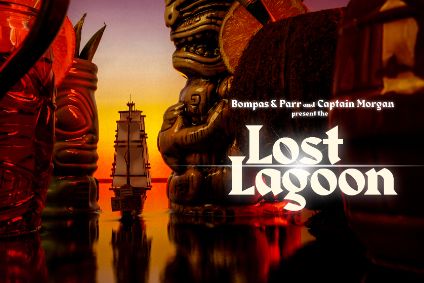Flicking through a magazine over the festive break, I happened across an article that was simultaneously fascinating and depressing. Instagram-worthy museums, where people go to take selfies in front of eye-popping exhibits, or whilst floating in ball pools, are apparently taking off in America. Subsequently, museums dedicated to pizza, ice cream and candy are enjoying huge ticket sales.
The more experiential the activation, the more consumers will remember them
They’re also, presumably, experiencing high accident numbers as people walk into each other whilst trying to take the perfect selfie.
A quick look into one such exhibition, called Candytopia, shows a dizzying collection of seemingly-unrelated objects: Model unicorn pigs having confetti blown from their anus; a copy of the Sphinx made from Gummy Bears; a waxwork of Robbin Williams dressed as Mork; a copy of the Golden Gate Bridge that’s been turned into a seesaw. Seriously. It’s been so popular that half a million people have been to see it, and the show is still opening in various places across the country.
It all looks rather vapid to me, but hey, I’m a grouch. It simply feels as if mankind is swimming steadily for the shallows, at a time when we should be deep diving.
What this does highlight, however, is how consumers want to place themselves in the centre of the story whilst having fun. The mark of being cool and supposedly leading a fulfilling life isn’t having the latest ‘It’ handbag hanging from your shoulder, as it was in the nineties and much of the noughties. It’s being seen in the hottest places, doing the most interesting and/or unusual things, and sharing your experiences on social media.
The eternal search for affirmation now boils down to how many likes you get on Instagram for a selfie taken in front of a Jelly Bean Mona Lisa.
“Experiences, not things!” appeared to be a mantra uttered by many in the lead-up to Christmas last year, no doubt fuelled by decreasing consumer confidence and concerns about the climatic impact of buying a load of tat that will likely end up in landfill anyway.
With a backlash against the unashamed consumerism we’ve experienced for so long, what does this mean for companies that produce goods, including drinks brands? It’s safe to say that people are looking for recognition beyond their wealth. As Piper-Heidsieck’s Benoit Collard recently told just-drinks: “The need to open a bottle ‘just to be seen’ is going away.”
It’s hard to provide incredible, tailor-made selfie moments when you’re simply selling a bottle of booze, but there’s something to be said for creating events that can draw people into the world of your brand, and build in that all-important social media buzz. A duo who appear to have anticipated this desire for the masses to enjoy these social-friendly experiences are jelly-botherers Sam Bompas and Harry Parr, who have been devising unusual food and drink experiences for a decade now. The pair were creating picture-perfect moments before the term ‘selfie’ came into common parlance, and their latest project sounds as if it’ll tick all those photo opportunity boxes.
Bompas and Parr have teamed up with Diageo’s Captain Morgan rum brand to create an experience that launches in London next month, drawing the general public into ‘the world’s largest indoor lagoon’ at a shopping mall in the city. Visitors will take themselves to various South Pacific-themed atolls by boat, where they’ll be immersed in tiki culture, and learn how to make rum punches. At the end will be another island with a party bar that includes a whirlpool cocktail station.
“Perfect for groups, and with a dress code of Neo-Tiki, the vibe will be colourful and celebratory,” the website reads. “Think beyond nautical, beyond beach, beyond buccaneer. At the Lost Lagoon, more is most definitely more.”
It sounds like fun.
When it comes to creating these unusual experiences through off-premise sales, things get a little more tricky, however. You can’t sell a ready-made inspiring background for social media photos or video. What you can do, however, is look at ways to tell the story beyond the bottle, and create drinking rituals that make people sit up and take notice. Once again, Bompas and Parr have made inroads in this field. In 2017, they worked with Edrington for the launch of The Macallan Edition No 3, a single malt Scotch produced in partnership with master perfumer Roja Dove.
To underline this fragrant partnership, Bompas and Parr devised an aroma that included some of Edition No 3 for a wood-clad diffuser, with the intention that the tasters would be surrounded by a fine mist, enhancing their olfactory experience of the whisky. VIPs were sent samples of the expressions, along with a diffuser, with instructions. This was a creative, and elegant way, to highlight the story behind a brand.
With an increasing number of consumers choosing to go sober, coinciding with a shaky-looking global economy, I predict that the brands that will weather the coming storms are the ones that are able to create immersive experiences or drinking rituals both at events and at home. When done right, they increase brand engagement, while also winning free peer-to-peer marketing for companies.
Just, stay away from the unicorn pigs if you adopt this approach.
Source: Why consumers are demanding more experiential marketing activations – Consumer Trends













